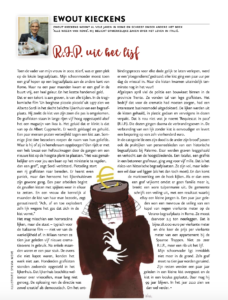MORGUE LIFE
When my wife’s father died in 2001, there was no place at the local cemetery. My mother-in-law then had to buy a grave at a cemetery on the other side of Rome. After a few months, a grave in the neighborhood became available. Quite a whiff. And it cost hands full of money.

A shortage of graves is of all times. In the 1977 tragicomic film “Un borghese piccolo piccolo” we see Alberto Sordi in the poorly lit morgue of a cemetery. He is looking for the coffin of his son who died recently. The coffins are piled in long rows five to five as if it were an Ikea warehouse. The sounds are that of the local market. People complain and cry. A few people talk to a coffin in despair. Some first time visitors call the name of their loved one. Where the hell is he or she stored away?
Italian film
Then with a loud noise a forklift truck drives through the corridors to place a new coffin on the highest shelf. “It was easier to arrange a job at the ministry for you than organizing a grave,” Sordi says bitterly. Suddenly a row of coffins falls down. There is a moment of panic, but then the morgue life resumes its normal course. A few workers are beginning to reassemble the fallen crates with nails. And a woman who apparently has been visiting her husband’s coffin for months, routinely says. “Well, once in a while such an explosion happens because of the gas that has formed in the coffin.”
It may seem like a horror scene, but it is not far from reality – typical of Italian film. Ten years ago they started in Milan using five new cremation ovens. After a few months, a couple of them broke down. The remaining ovens could not handle the work. Hundreds of coffins were thus placed in the morgue with a shortage o freezer rooms. The management’s solution was both creative and democratic. In order to ensure that the decomposition process was the same for every death, a ‘shift work’ was run: each coffin went into the freezer for a few hours a day.
But at least those boxes still got into the fire.
Last April the police invaded the site of a funeral company in the province of Trento. They found numerous empty coffins. The company should take care of the cremation had concocted an interesting business model. The corpses were removed from the caskets, put in plastic and then packed in boxes. That’s not what you call Requiscat in pace (RIP). Those boxes then went into the incinerator. Burning a corpse without a coffin is easier and results in savings of around 400 euros. It’s all about money.
Tulip mania
In the category “their loss, your gain” fit also the practices of staff members of a historic cemetery near Palermo. There, graves were emptied and sold to the highest bidder. A loculus, a grave in a concrete burial wall, went away for five grant. That is the risk of historical cemeteries. They are full, but everyone wants to lie there (if they have to).
If a grave is released once there is no longer a family, a true tulip mania breaks out. The municipality of Rome was launching an auction, with a result where Ebay is a little boy. A lady won the auction of a nine square meter chapel at the Verano cemetery in Rome. She had to put 250,000 euros for that. That is almost 28,000 euros per square meter. You have three apartments for that at the Spanish Steps. More dip than RIP.
My father-in-law rests no longer in the ground. Such a grave in the soil must be cleared after ten years. His remains were transferred into a small box a few years ago and the box was placed in a loculus. He can stay there for 99 years. We will see further in the year 2110. Keep me at it.

